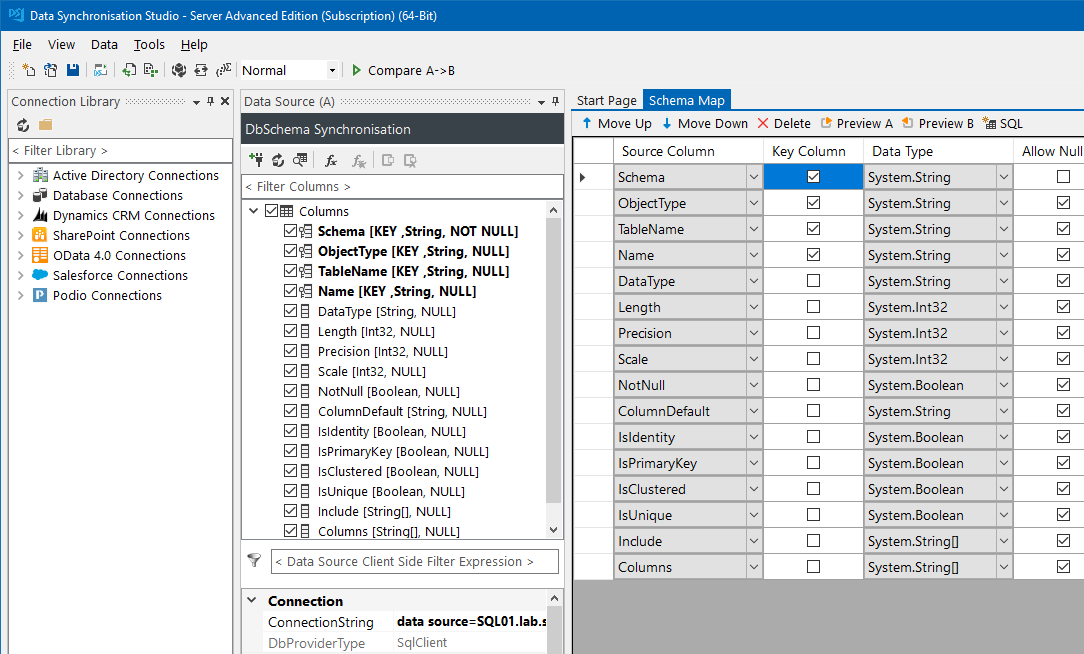Database Schema
The DB Schema connector enables you to return and synchronise the schema of your databases. This connector supports SQL, PostgreSQL and MySQL connections and works with Tables, Columns, Indexes and limited Data Types.
It is useful for being able to create a replica of your original database. You can run the project on a regular basis to ensure that data types, lengths and any columns and tables are all kept up to date.
The provider returns all the schema data about your database including the object types: Columns, Constraints and Indexes. The data types, data lengths, column names and primary keys as a few examples. You can preview the full schema description and export the result as you need to a CSV, Excel, XML or JSON document.
Install the Connector
You need to start by installing the DbSchema connector from the Simego GitHub page. We have built a connector installer inside Data Sync that will download and install the relevant files for you.
To get to the installer go to File > Install Data Connector. This will open the Connector Installer Window, where all you need to do is select the connector you want to install from the drop down and click OK.
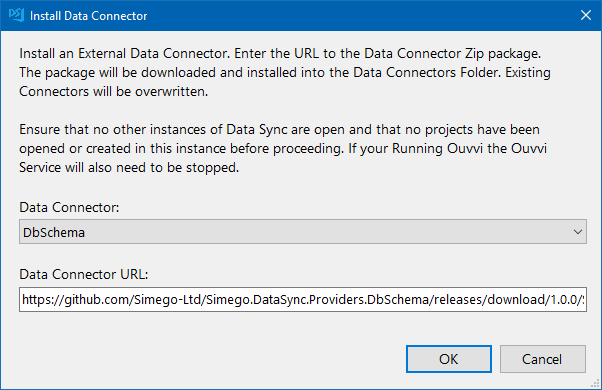
If the installation was successful you should get a confirmation popup and you now need to close all instances of Data Sync and then re-start the program.
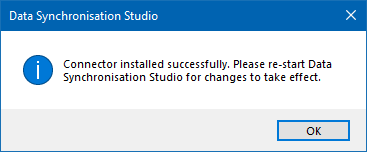
If you get an error saying it could not install the connector because it is "Unable to access folder", then this is because the folder is locked by Ouvvi. Please stop your Ouvvi services and try again.
You can now access the connector from the connection window under SQL Database > DbSchema Synchronisation.
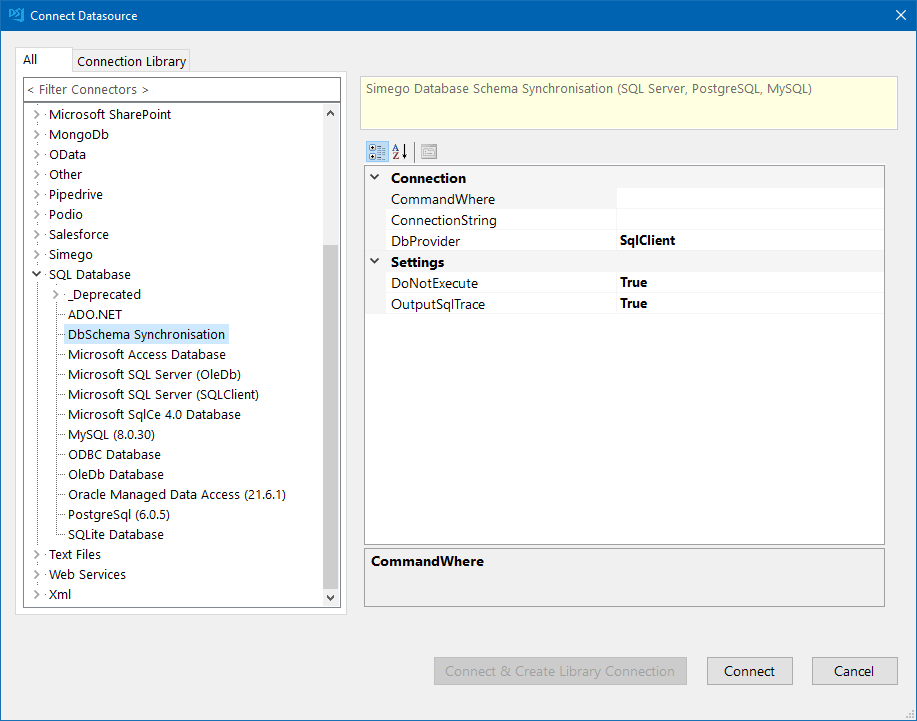
Using the Connector
To connect you need to enter in the connection string to your database and set the database provider to be the right provider for the database you are connecting to.
For SQL databases you would use the SqlClient provider, for MySQL you would use the MySql provider and for PostgreSQL you would use the Npgsql provider.
If you have already saved the connection to this database you can get the connection string by opening the connection in notepad and copying the connection string.
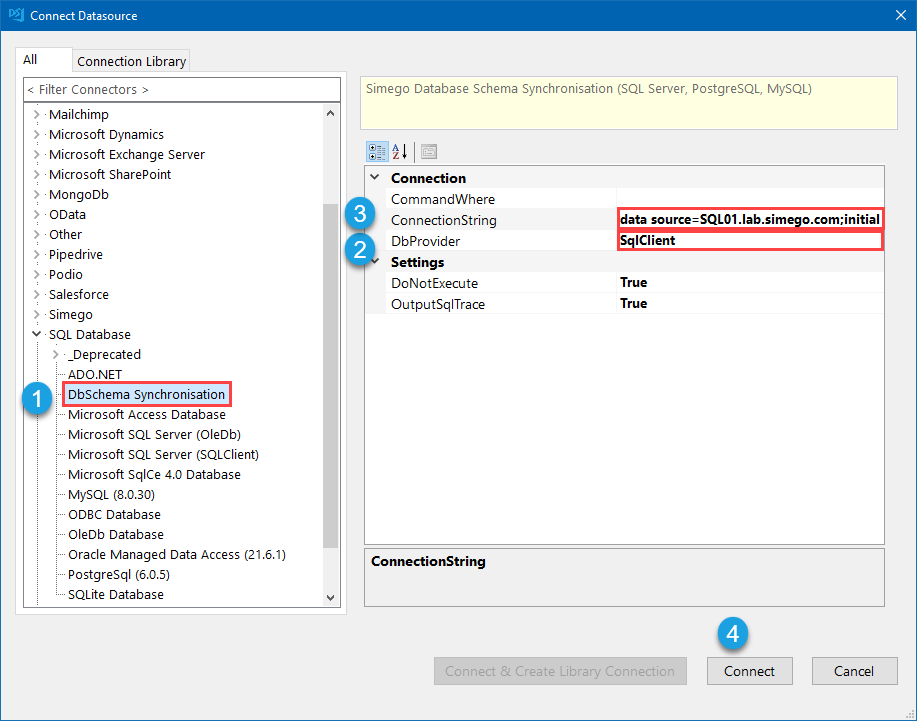
Once this has been entered you can click Connect to load the database schema into the datasource window.
